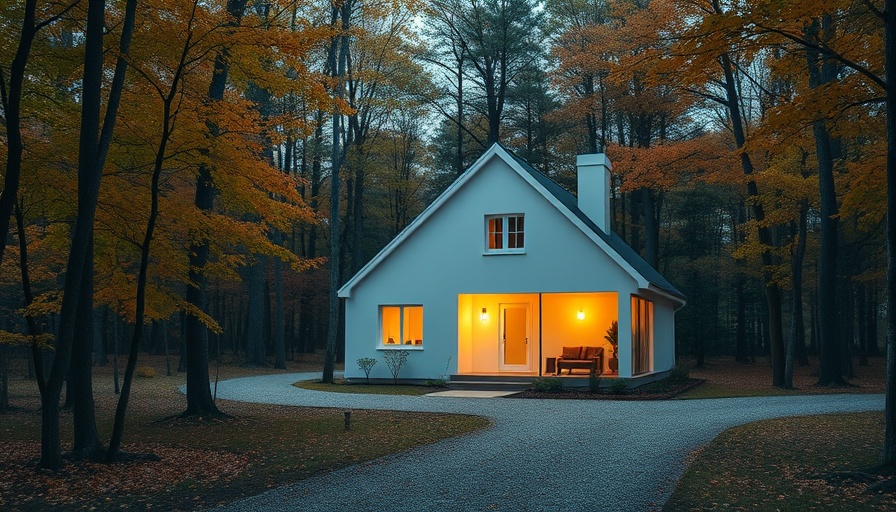
Connecting Nature and Comfort in Design
The Pine Island Cottage, crafted by the collaborative efforts of Bureau Tempo and Thom Fougere, seamlessly blends with its stunning Georgian Bay surroundings through thoughtful design that prioritizes the user experience. As our lives increasingly move towards remote work, creating a workspace at home that mirrors the tranquility and rugged textures of nature can have a profound impact on our productivity and well-being. This project serves as an exemplary model, showcasing how integrating natural elements into interiors can enhance not only aesthetic appeal but also comfort and functionality.
Embracing Tactile Experiences
Fougere and his team placed significant emphasis on creating interiors that reflect the tactile experience of the island’s rocky beaches. This concept of tactile design is vital for remote workspaces where comfort can influence focus and performance. Consider incorporating materials that invite touch, such as smooth wood surfaces or soft textiles, mirroring the effects seen in Pine Island Cottage’s use of rough fieldstone and textured upholstery. These choices not only resonate with our emotional psyche but also make the workspace inviting and enjoyable.
Designing with Patina in Mind
The cottage design encourages the use of materials that age beautifully, a concept encouraged during early discussions with the family. In an era where sustainability is key, choosing pieces that develop character over time offers both aesthetic and functional advantages—particularly for remote workspaces that need to stand the test of time. Well-aged materials lend themselves to a personalized touch, transforming any workspace into a reflection of our journey, experiences, and professional growth.
Creating Functional Gathering Spaces
The central gathering spaces in Pine Island Cottage serve as a reminder of the importance of communal areas in a home, especially for those working remotely. The kitchen island, for instance, doubles as a workspace and a social hub, reflecting the importance of collaboration and connection to our surroundings. In your home, consider designing similar multi-functional areas that foster interaction and enhance productivity, merging work and life seamlessly.
The Impact of Light and Comfort on Productivity
Natural light penetrates the main living area of the Pine Island Cottage through extensive glass, augmenting the space’s openness and connection to the environment. For a home workspace, maximizing natural light is crucial. It boosts mood and energy levels, greatly enhancing productivity. Ensure that your workspace is bright and airy by using large windows, mirrors to reflect light, or strategically placed lamps that mimic natural sunlight.
Furthermore, ergonomic furniture plays a significant role in ensuring comfort during long work hours. Integrating soft seating that supports healthy posture, akin to the cozy built-in sofa featured in the cottage, can promote better health and concentration. This conscious choice exemplifies the balance between feeling relaxed and remaining efficient while working.
Conclusion: Designing for Wellness and Efficiency
The Pine Island Cottage is a striking representation of how nature-inspired design can create a cozy yet efficient workspace at home. As digital nomads and remote workers, the lessons drawn from this cottage can guide you in crafting spaces that not just serve functionally but also nurture your well-being. Whether by selecting natural materials, emphasizing comfort, or enhancing light, every decision leads to a more productive remote working experience. Embrace these ideas to transform your workspace into an invigorating sanctuary that promotes creativity and focus.
Consider taking these insights from Pine Island Cottage into your workspace strategy. Create a remote environment that resonates with nature's beauty and functionality, and watch your productivity soar.
 Add Row
Add Row  Add
Add 




Write A Comment